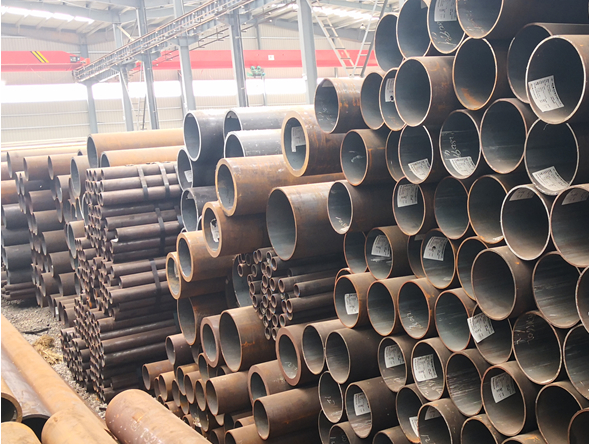What is seamless tubing?
Seamless tubing/tube is a long strip of steel with a hollow section and no seams around it. There are many methods of manufacturing seamless tubes, all of which are more complex than welded pipe processes.
Rotary piercing is among the most common methods. A solid biller of metal rolled in a cylindrical shape (the ‘mother tube’) is given a small indentation on one side. It then is fed through a roller system that shapes the outside diameter of the stainless tubing. This is done with an inner die called the ‘piercer roll,’ which is aligned with the indentation (that forms the interior tube diameter).
This simple process is extremely precise and therefore does not work well for small-diameter tubing. Drawing, another seamless tube production method, is superior for small-diameter pipes. A mother tube is crimped and pulled through a narrowing die. This stretches the tube to be longer and narrower.

Advantages and disadvantages of seamless tubes:
Seamless tubes offer several advantages:
High corrosion resistance (chemicals, gases, oils and water)
High pressure rating (objects can pass through it at tighter concentrations and higher temperatures)
Extremely durable due to these points
Symmetric, even, beautiful
Ideal for small applications requiring precision
Purer steel than other alternatives
There are also some disadvantages, such as:
Significantly longer manufacturing times
More difficult to manufacture
Higher costs due to increased labor
Difficult to customize (due to higher wait times and costs)
Cannot be easily used on larger diameter pipes
What is welded tubing?
Welded tubing/tube is the most common and durable type of steel tube manufacturing method. Tubes are created by rolling stainless steel into tube shapes before being welded along their full length. The seam will then often be refined by using cold rolling methods, but sometimes it will be left as is.
Because welded pipes can have multiple seams, it’s also possible to get piping in many different shapes. You can have square and rectangular pipes made if they will fit better in your space that way. They can also be extremely large in diameter because they can have more than one seam.
Welded tubes often have larger diameters and thinner walls than their seamless counterparts. This allows for larger items to pass through them. They can also be drawn like seamless tubing for a better seam and finish, giving them a tighter tolerance. This makes them resistant to heat and water.
Advantages and disadvantages of welded tubes:
There are many advantages to using welded tube. They include:
They are made very quickly
Rapid development of new manufacturing technologies
They cost much less (seamless vs. welded pipe options)
High precision in diameter and thickness
Tighter tolerances
You can buy long ones
They have consistent concentricity
Aesthetic brightness (when the tube is visible)
There are also several disadvantages:
Smaller diameter pipes take longer to produce
The welding process of small diameter pipes is more difficult
Some people think that welded pipes have seams that are unsightly
There are slight impurities at the seams
They are more susceptible to corrosion than other alternatives (especially around seams)
Greater pressure in certain areas
Go here to learn more about " Carbon steel vs Stainless steel"


